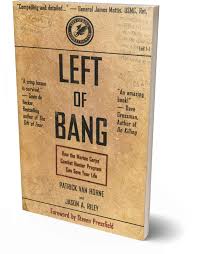In the last week there have been a number of people who have thanked me for my service in the Marines as we’ve gotten closer and closer to Memorial Day. While I’m always appreciative when people acknowledge service members, Memorial Day truthfully isn’t meant for me or any other living veteran. Memorial Day is the day we set aside every year to honor those who have died while serving in the military, while Veterans Day is the day when our country honors all of those who have served. While those men and women who are currently on active duty, in the reserves, or are veterans absolutely made sacrifices while serving, Memorial Day is meant to honor those who made the ultimate sacrifice and were killed while fighting for our country.
Memorial Day is meant to remember heroes like Marine Corporal Jacob Leicht, who was killed by an IED on May 27, 2010. He died in Afghanistan two years and nearly 20 surgeries after his leg was shattered by an IED during his first deployment to Iraq. He is a hero because he had to fight the Marine Corps leadership to send him to a deploying battalion because he didn’t feel he was done serving our country.
Memorial Day is a day to remember warriors like Marine Sergeant John Rankel, who was killed in action on June 7, 2010. He was a warrior because he was killed on his third deployment, a deployment he volunteered for because a unit that was heading to Afghanistan was short on non-commissioned officers.
Memorial Day is a day to remember leaders like Marine Captain Matt Manoukian, who was killed on his third deployment in a green-on-blue (insider) attack by a member of the Afghan security forces his MARSOC Team was partnered with.
So, while thanking a veteran is certainly always appreciated, here are a few other ways you can honor those who paid the ultimate sacrifice this Memorial Day:
1. Take your son, daughter, niece or nephew outside and talk to them about the flags you see flying around you. Teach them that America has had to fight for the freedoms we have and that nothing was given to us. Teach them that people had to die to earn what the flags represent and what we take for granted every day.
2. Have a non-emotional and practical conversation with someone who has a different political view than you do. As we get closer to our presidential election this year, where you will continue to hear politicians talk about their opponents as enemies, remember that America has actual enemies and, while those holding office will make the decision to go to war, there are a lot of young men and women who will leave home to fight it, and not all of them will come back from it.
3. If you do want to thank a veteran, go to a parade or a Memorial Day event, remember that the veterans and the active duty service-members present are a proxy for those who can’t be at the event.
4. Think about how you can tangibly support our military. After WWII, we built an entire defense industry so that American citizens wouldn’t have to bear the burden of supporting a war effort and, while there are pros and cons to that, it doesn’t mean that Americans can be ignorant of our wars either.
5. Remember that Memorial Day is a holiday to honor those who died while serving in our military during any period in our history. The wars in Afghanistan and Iraq might be the most recent, which is why those three Marines I talked about earlier are the ones on my mind this weekend, but I write this after also recently talking to a WWII veteran who saw many more die during his two beach landings in the Pacific. As Memorial Day is for all of those who died, don’t let recent experiences dominate your thinking at the detriment of those who came before us.
This Monday, remember why we celebrate the freedoms that those who have died have provided for us.
Never forget and never quit.
Photo credit: Wikimedia Commons


